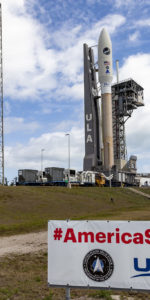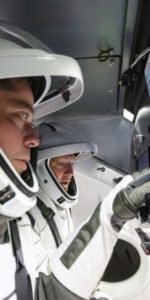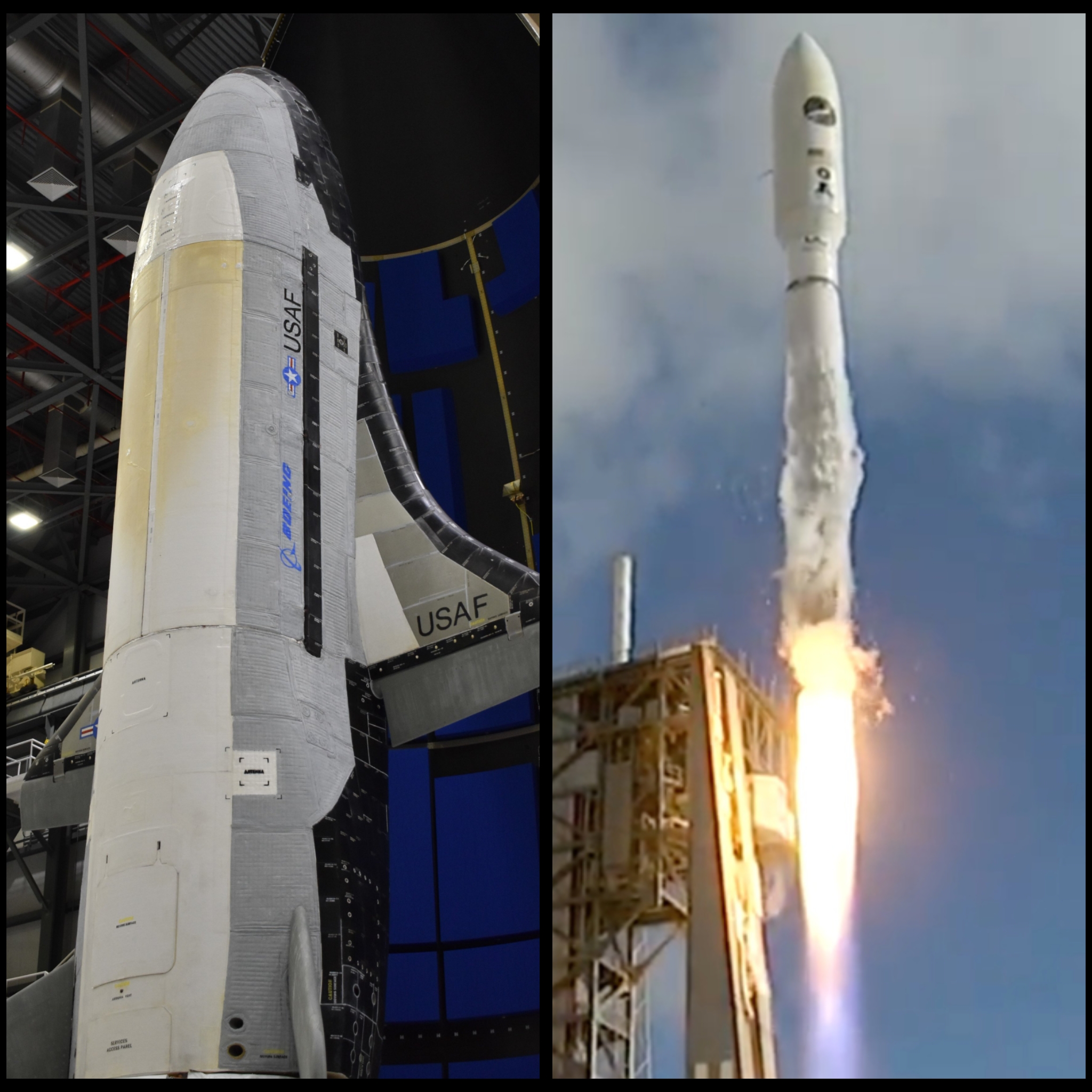
Following a one-day scrub on Saturday, United Launch Alliance (ULA) successfully despatched its third Atlas V of the year early Sunday, 17 May, to deliver the highly secretive X-37B Orbital Test Vehicle (OTV) mini-shuttle into low-Earth orbit on behalf of the U.S. Space Force. Liftoff of the Atlas V 501 heavylifter occurred right on time at 9:14 a.m. EDT from historic Space Launch Complex (SLC)-41 at Cape Canaveral Air Force Station, Fla.
However, in a noticeable departure from its previous 2020 missions to launch Solar Orbiter in February and the last Advanced Extremely High Frequency communications satellite (AEHF-6) in late March, today’s ascent parameters were cloaked in secrecy. Ascent updates ended shortly after the payload fairing had been jettisoned and Booster Engine Cutoff (BECO) confirmed. It remains to be seen how long the X-37B—which flew five times between April 2010 and October 2019, with individual mission durations getting progressively longer from 224 days on its maiden voyage to 780 days at the end of its most recent flight—will remain aloft this time around.
As outlined in AmericaSpace’s preview article, it has taken more than a half-year to get the Atlas V hardware and payload ready for today’s launch. The Common Core Booster (CCB) first stage and Centaur upper stage were delivered to the Cape from ULA’s facility in Decatur, Ala., last October, for pre-flight processing. In late April, the Launch Vehicle On Stand (LVOS) milestone saw those two huge components—together with the inter-stage adapter and the lowermost portion of the Short Payload Fairing (SPF)—mated together in the 30-story Vertical Integration Facility (VIF) at SLC-41. Earlier this month, the short payload fairing containing the X-37B was mounted on the stack, topping off the Atlas V at 197 feet (60 meters) tall. The complete vehicle was rolled 1,700 feet (500 meters) from the VIF to the pad surface on Thursday, where the CCB was loaded with a highly refined form of rocket-grade kerosene, known as “RP-1”.
Formal countdown operations began crisply at 1:04 a.m. EDT Saturday, exactly seven hours and 20 minutes before launch, with clocks showing T-6 hours and 20 minutes. Two built-in holds, each lasting 30 minutes, were timed to occur just before the onset of cryogenic tanking and at T-4 minutes before the start of the Terminal Count. ULA noted that there were a pair of ten-minute “windows” of opportunity to get the mission off the ground on Saturday: the first from 8:24 a.m. to 8:34 a.m. EDT and a second from 10:13 a.m. to 10:23 a.m. EDT. But with a broad area of low pressure developing off the southeastern coast of Florida, it was expected that higher winds and rain were anticipated early Saturday. Key concerns centered upon rain bands, cumulus clouds and ground winds which might violate Launch Commit Criteria (LCC).
All things considered, Launch Weather Officer Jessica Williams of the 45th Weather Squadron at Patrick Air Force Base noted only a 40-percent likelihood that the weather gods would co-operate on Saturday. “It has been a soggy night on the Space Coast as bands of showers rotate on shore from the Atlantic, courtesy of an area of low pressure to our south that is trying to develop into a tropical weather system,” ULA noted in a blog post early Saturday. “The tight pressure gradient is keeping the ground winds brisk as well.” It added that the scattered showers were expected to be “hit-or-miss” throughout the remainder of the countdown operation. However, Ms. Williams noted that as the low begins to move away from the coast and in the northeasterly direction by late Saturday, a much improved picture for Sunday carries an 80-percent probability of good weather. This was later downgraded slightly to 70 percent.
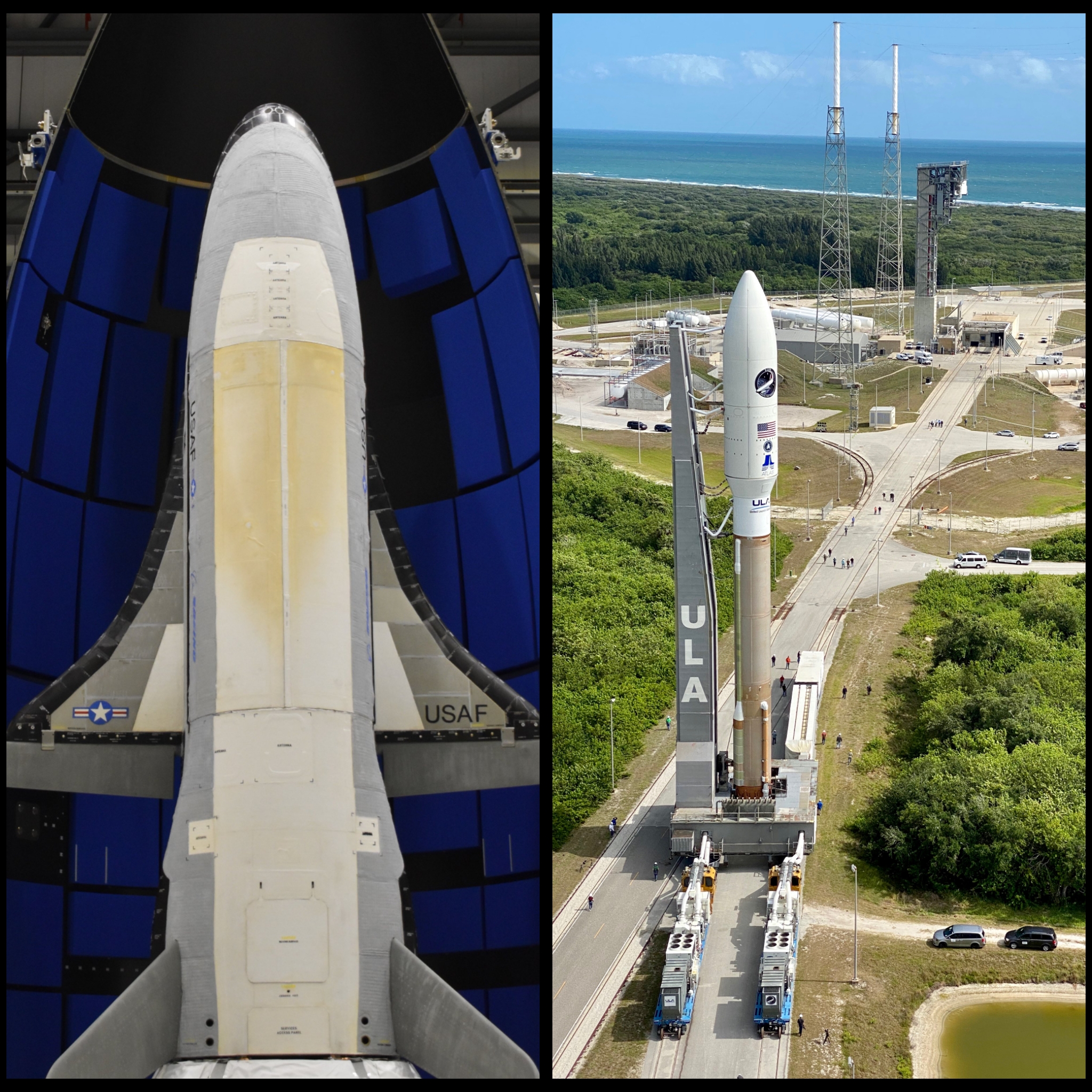
In spite of the pessimistic outlook, pre-launch preparations continued through Saturday’s pre-dawn darkness as the Atlas V was powered-up, its avionics and guidance system were checked and the rocket’s S-band telemetry system was tested. “The bird looks good,” tweeted ULA CEO Tory Bruno, then cautioned: “A bit windy. Everyone think calm thoughts.” By 5 a.m. EDT, the western side of the low-pressure weather system had begun to dissipate, although the overall outlook remained 40-percent-favorable.
Shortly thereafter, the countdown entered its first built-in hold and a “Go/No-Go” poll permitted the onset of fueling the CCB with liquid oxygen and the Centaur upper stage with liquid oxygen and hydrogen. As the first rays of sunlight touched the Space Coast, the ground winds began to hover around the limits required for launch, with all other weather criteria identified as “green”. Then a first-stage liquid oxygen inlet temperature sensor began to return erratic readings. ULA Launch Conductor Dillon Rice referred it to Anomaly Chief Dave McFarland for troubleshooting. The anomaly was closed-out in short order, with Mr. McFarland reporting that an alternate sensor could provide adequate cover.
Fueling continued in the hope that the launch window could be met, but cumulus cloud cover and “brisk” ground winds gradually crept over allowable limits, with both reclassified as “red”. A line of rain extending out into the Atlantic “continues to stream over the pad,” reported ULA at 7:50 a.m. EDT, just a half-hour before the opening of the first launch opportunity of Saturday. Ms. Williams anticipated conditions to remain “No-Go” for another hour beyond that point, as the likelihood of acceptable weather deteriorated to only 20 percent. With the Atlas V fully fueled and otherwise ready to go, countdown clocks halted as planned for the final 30-minute built-in hold at T-4 minutes. During this period, ULA Launch Director Paul Aragon requested Mr. Rice to target the end of the first launch opportunity, setting a new T-0 at 8:34 a.m. EDT.
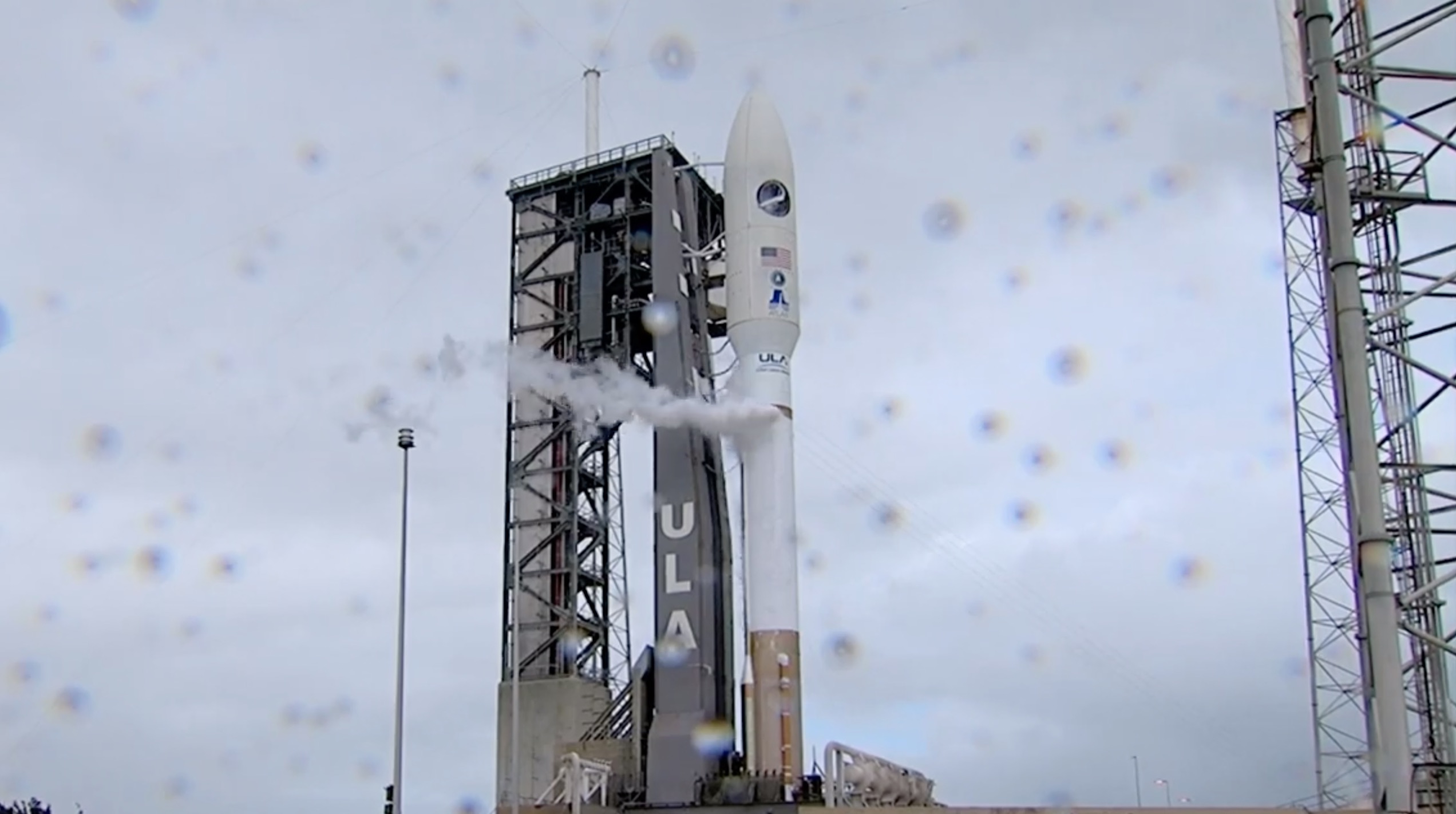
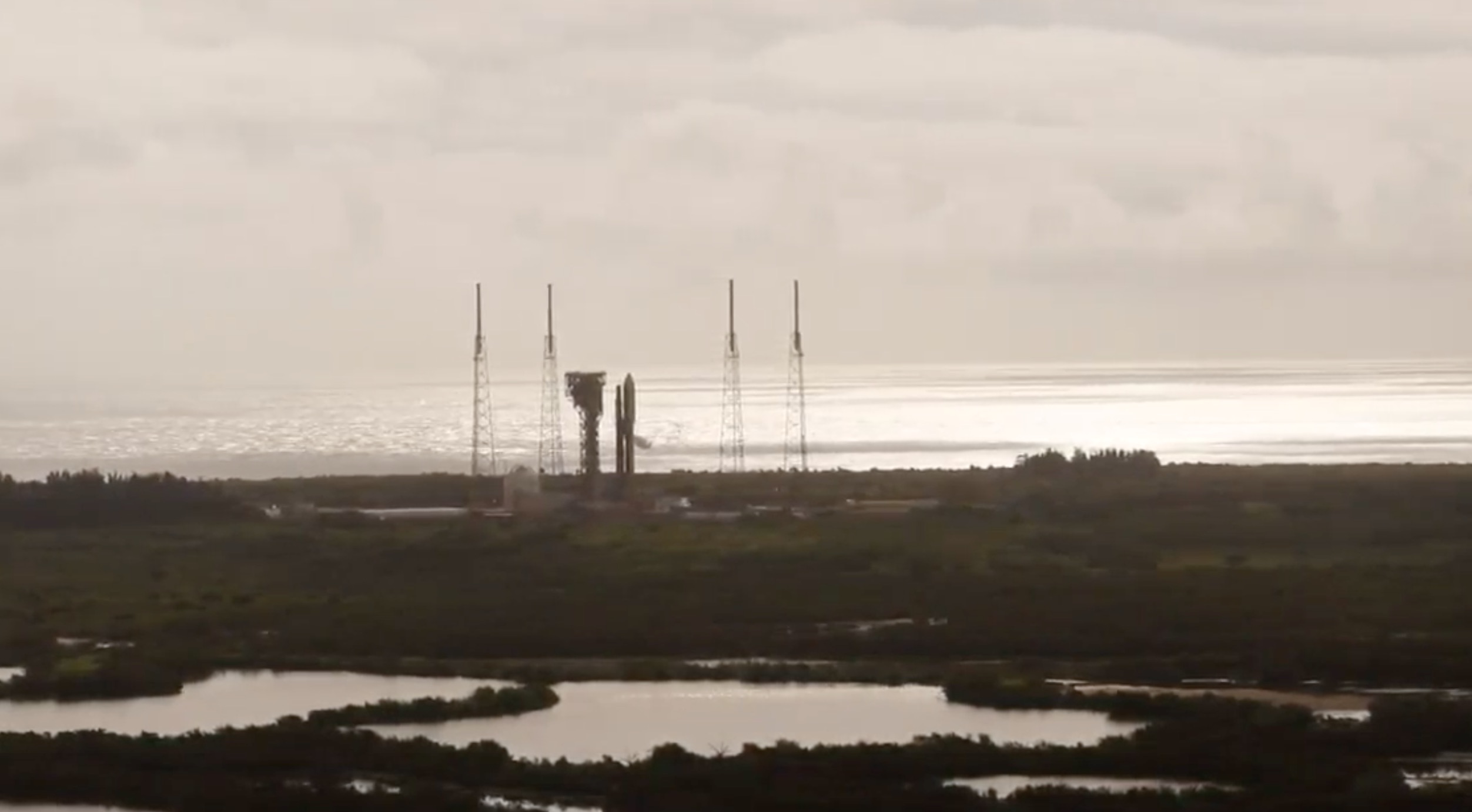
However, the cumulus cloud and ground winds situation did not improve sufficiently to meet the end of the first window and Mr. Aragon instructed Mr. Rice to reset the clock for a revised T-0 at 10:13 a.m. EDT. But the weather proved more intractable, prompting another decision to reset T-0 for the end of the second window at 10:23 a.m. That, too, became untenable and the clock was stopped and a scrub called at T-1 minute and 40 seconds. The Atlas V was reconfigured to drain cryogenics and support a 24-hour turnaround leading to a second launch attempt at 9:14 a.m. EST Sunday.
Interestingly, the ULA launch team developed a plan to manually monitor the ground wind limits, rather than relying upon computer control which could “trip up” the terminal count. But in spite of all the efforts to will USSF-7 on its way, there was no avoiding the stark fact that Saturday was not the day. “Darn weather,” tweeted Mr. Bruno after the scrub was called. “See you tomorrow. Going to need everyone to focus on those calm, clear thoughts ever harder.”
His words seemed to have the desired effect. By the pre-dawn hours of Sunday, the swirling low-pressure which generated Saturday’s persistent stream of rain showers had formed into Tropical Storm Arthur. “But the system is pulling northeastward away from the Space Coast,” noted ULA in its first weather briefing, “giving us much more dry conditions this morning. Also, the tight pressure gradient that delivered brisk ground winds has loosened. Winds are within limits.”
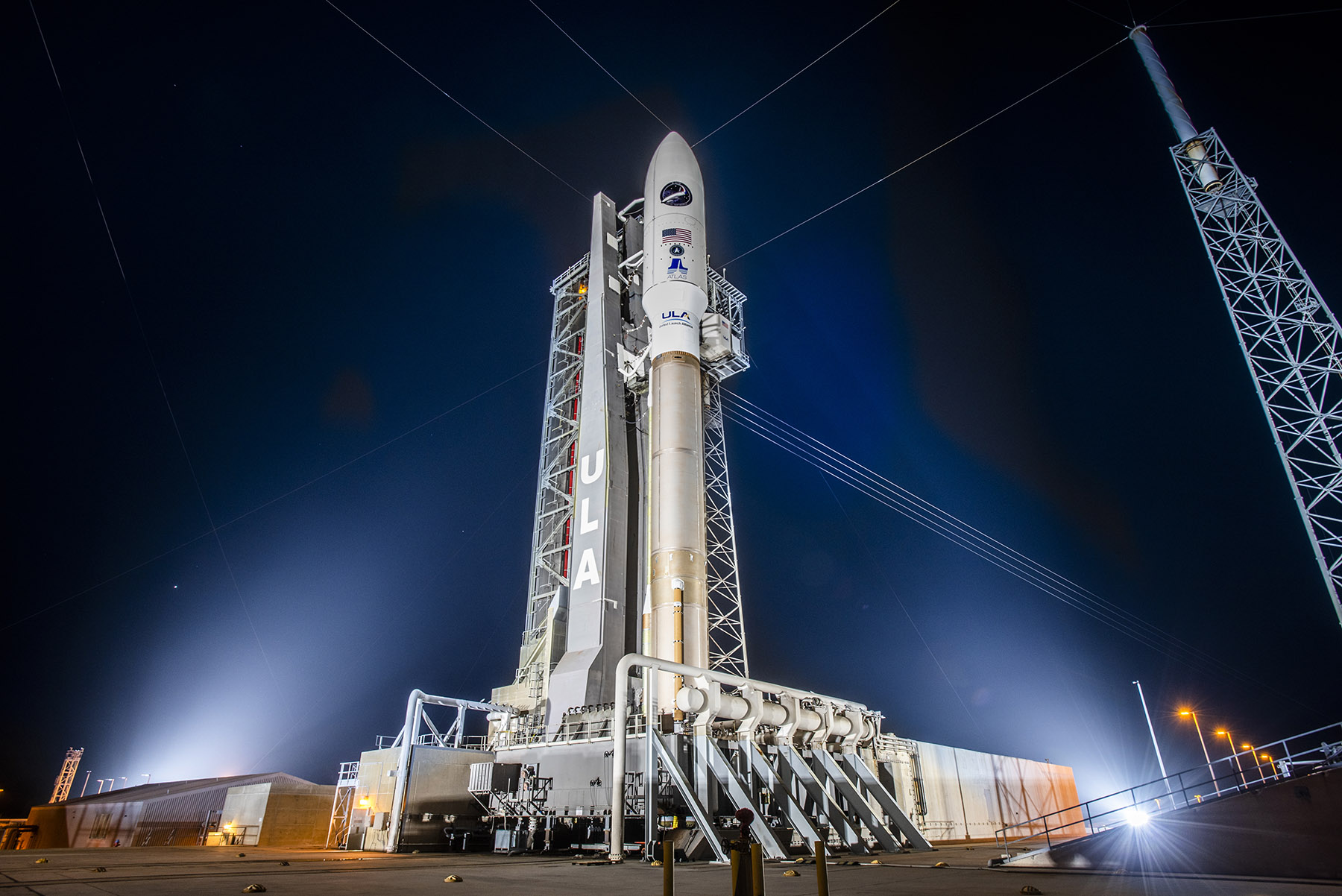
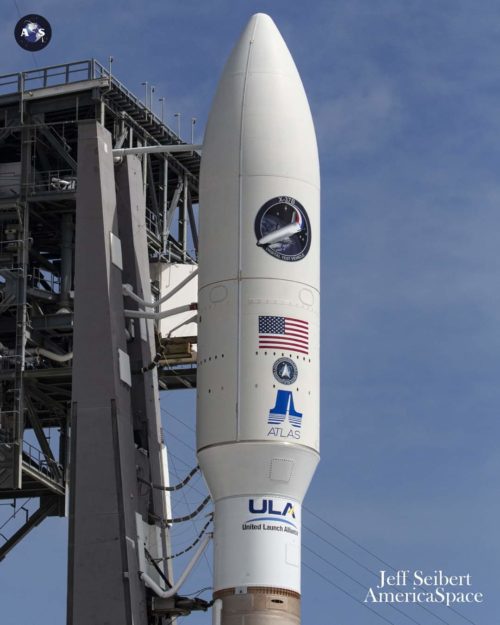
Fueling proceeded smoothly for the second day in a row, punctuated only by a first-stage instrumentation issue which was quickly closed. All told, Mr. Bruno tweeted, Sunday’s countdown was “as smooth as the laminar flow in our propellant feed system”. The weather outlook, initially 70-percent favorable, improved markedly to 80 percent as dawn broke over Florida; a marked difference from Saturday’s dreary and soggy overcast.
Liftoff occurred on time at 9:14 a.m. EDT, right on the opening moment of the first ten-minute launch opportunity of Sunday. Ascent ran smoothly, with the payload fairing jettisoned as planned at three minutes and 40 seconds into flight and Booster Engine Cutoff (BECO)—the shutdown of the dual-nozzle RD-180 first-stage engine—occurred shortly thereafter. The CCB was then discarded and the Centaur’s RL-10 engine picked up the baton to deliver the X-37B into its operational orbit. Flying with an attached “service module” for the first time, today’s sixth launch of the X-37B carries far more payload capacity than its predecessors and presses the envelope in terms of capability.
“The success of this mission resulted from collaboration with our customer while working through challenging, and ever changing, health and safety conditions,” said Gary Wentz, ULA vice president of Government and Commercial Programs. “We were honored to partner with the U.S. Space Force to dedicate this mission to first responders, front-line workers, and those affected by COVID-19. It is truly a unique time in our history and I want to thank the entire team for their continued dedication and focus on mission success.”
Wrapping up its third launch of 2020, ULA has six more missions slated before the end of the year. Next up in July, an Atlas V will deliver NASA’s Perseverance rover towards Mars, followed by a Delta IV Heavy in August with the classified NROL-44 payload for the National Reconnaissance Office. The highly secretive NROL-101 mission will fly in September, Boeing’s second uncrewed CST-100 Starliner is scheduled for October-November, whilst the first Atlas V ever to fly in a “511” configuration—equipped with a 17-foot-wide (5-meter) payload fairing, a single solid-fueled booster and a single-engine Centaur—will deliver the USSF-8 mixed payload late in the year for the U.S. Space Force. And in October, another Delta IV Heavy will deliver NROL-82 from Vandenberg Air Force Base, Calif., marking ULA’s first West Coast mission since January 2019.
.
.
FOLLOW AmericaSpace on Facebook and Twitter!
.
.




